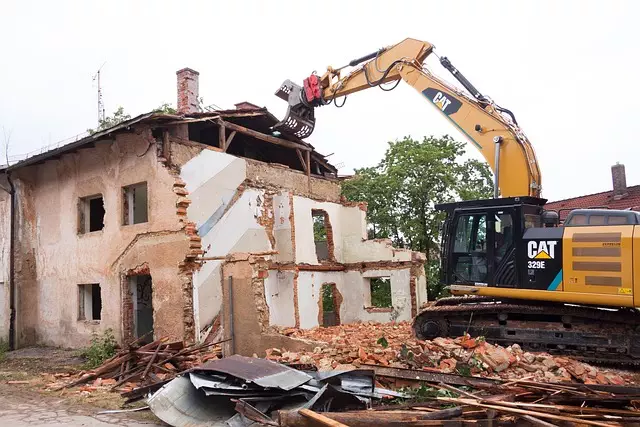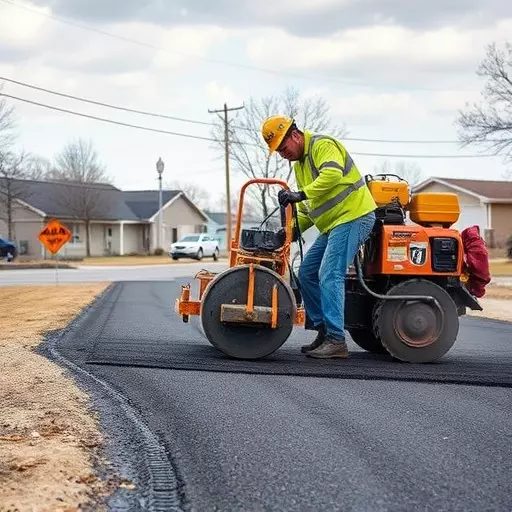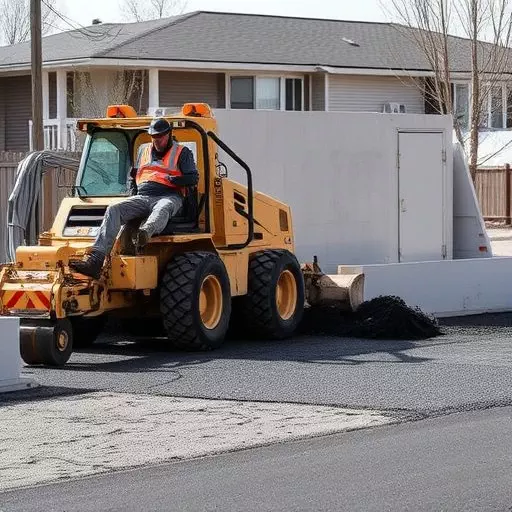Pavement milling is a specialized asphalt removal technique used by Toledo contractors to prepare surfaces for new installations while preserving structural integrity. This process involves grinding up asphalt without damaging underlying layers, enabling efficient recycling and minimizing site disruption. After demolition, non-destructive testing methods assess the remaining structure's safety. Reputable Toledo asphalt demolition contractors follow best practices, including thorough preparation, debris removal, and base material assessment, using advanced techniques like cold planing to ensure a structurally sound and long-lasting reconstruction process. Effective communication between stakeholders is key to tailoring these processes to specific needs.
After completing a project or reaching the end of a road, understanding the structural integrity of a site becomes paramount, especially following asphalt demolition. This process, often involving pavement milling and effective asphalt removal techniques, can leave structures vulnerable if not properly assessed. This article delves into best practices for contractors in Toledo, exploring challenges, considerations, and successful case studies related to structural restoration post-asphalt demolition. Learn about the latest techniques in asphalt removal and reconstruction for safe, efficient outcomes.
- Understanding Pavement Milling: The Initial Step in Asphalt Demolition
- Effective Asphalt Removal Techniques: A Contractor's Perspective
- Assessing Structural Integrity: Challenges and Considerations Post-Demolition
- Best Practices for Safe and Efficient Reconstruction After Asphalt Demolition
- Case Studies: Successful Structural Restoration Projects Following Asphalt Removal in Toledo
Understanding Pavement Milling: The Initial Step in Asphalt Demolition
Pavement milling is a critical initial step in any asphalt demolition project, and it’s a process that requires expert knowledge and specialized equipment. This technique involves the removal of the top layer of asphalt or concrete pavements using a milling machine, which grinds the surface into small pieces while collecting them for subsequent disposal or recycling. It’s a crucial first step because it prepares the surface for proper restoration or reconstruction, ensuring structural integrity for the next phase of the project.
When an asphalt demolition contractor in Toledo undertakes this task, they employ advanced pavement milling techniques to efficiently remove the existing surface without compromising the underlying structure. This meticulous process allows for precise control over the depth and quality of the removal, setting the stage for a seamless transition to new pavement installations or structural enhancements.
Effective Asphalt Removal Techniques: A Contractor's Perspective
When it comes to preserving structural integrity during and after asphalt demolition, the methods employed for asphalt removal play a pivotal role. As an asphalt demolition contractor in Toledo, understanding effective asphalt removal techniques is paramount. One of the most common and precise methods is pavement milling, which involves using specialized equipment to grind up the asphalt while leaving the base layers intact. This approach not only ensures efficient material recycling but also minimizes site disruption.
By employing pavement milling, contractors can accurately plan and execute demolition projects with confidence. The technique allows for controlled removal of asphalt without compromising the sub-base, thus preserving the structural foundation. As a result, post-demolition repairs become more straightforward, ensuring that the area is quickly restored to its original state or prepared for new pavement installations while maintaining the overall structural integrity of the site.
Assessing Structural Integrity: Challenges and Considerations Post-Demolition
After the completion of an asphalt demolition project, assessing the structural integrity of the underlying surfaces becomes a critical step for any asphalt demolition contractor in Toledo. While initial visual inspections can reveal significant issues, they often only scratch the surface. The complexity and scale of modern infrastructure mean that subtle defects or hidden weaknesses might go unnoticed without specialized equipment and expertise.
Asphalt removal techniques, including pavement milling, introduce unique challenges. This process involves removing the asphalt layer while minimizing damage to the base materials below. However, improper execution can lead to uneven surface profiles, weakened structural elements, or even voids in the subbase. Therefore, a comprehensive assessment should employ non-destructive testing methods like ground penetration radar (GPR) and ultrasound scanning to detect these hidden issues. These techniques are vital tools for ensuring that the remaining structure meets safety standards and is fit for its intended use after asphalt demolition.
Best Practices for Safe and Efficient Reconstruction After Asphalt Demolition
After the successful completion of asphalt demolition, ensuring structural integrity during reconstruction is paramount. A reputable asphalt demolition contractor Toledo should adhere to best practices that include thorough site preparation and assessment before beginning any reconstruction work. This involves clearing the area of all debris, examining the underlying base materials for damage, and identifying potential hazards or weaknesses in the structure. Using advanced asphalt removal techniques such as pavement milling ensures efficient and safe removal of old asphalt while minimizing disruption to the subbase.
During reconstruction, it’s crucial to employ high-quality materials and implement proven construction methods. This includes compacting and leveling the subbase before laying down new layers of asphalt. Regular inspections at each stage of reconstruction are essential to catch any issues early on. By following these best practices, an asphalt demolition contractor Toledo can guarantee a structurally sound and efficient reconstruction process, ensuring safety and longevity for future pavements.
Case Studies: Successful Structural Restoration Projects Following Asphalt Removal in Toledo
After asphalt demolition in Toledo, successful structural restoration projects often hinge on meticulous planning and advanced pavement milling techniques. Local contractors specializing in asphalt removal play a pivotal role in ensuring buildings’ structural integrity remains intact. These experts employ precise methods like cold planing, which involves removing the top layer of asphalt while minimizing damage to the base layers beneath.
Case studies from Toledo demonstrate that effective communication between property owners, engineers, and experienced asphalt demolition contractors is key. By understanding specific needs and constraints, these professionals can tailor their asphalt removal processes to preserve underlying structures, including concrete foundations and steel reinforcement. The result? Restored sites that safely support new developments or renovations, showcasing the transformative power of professional asphalt removal techniques in Toledo.


